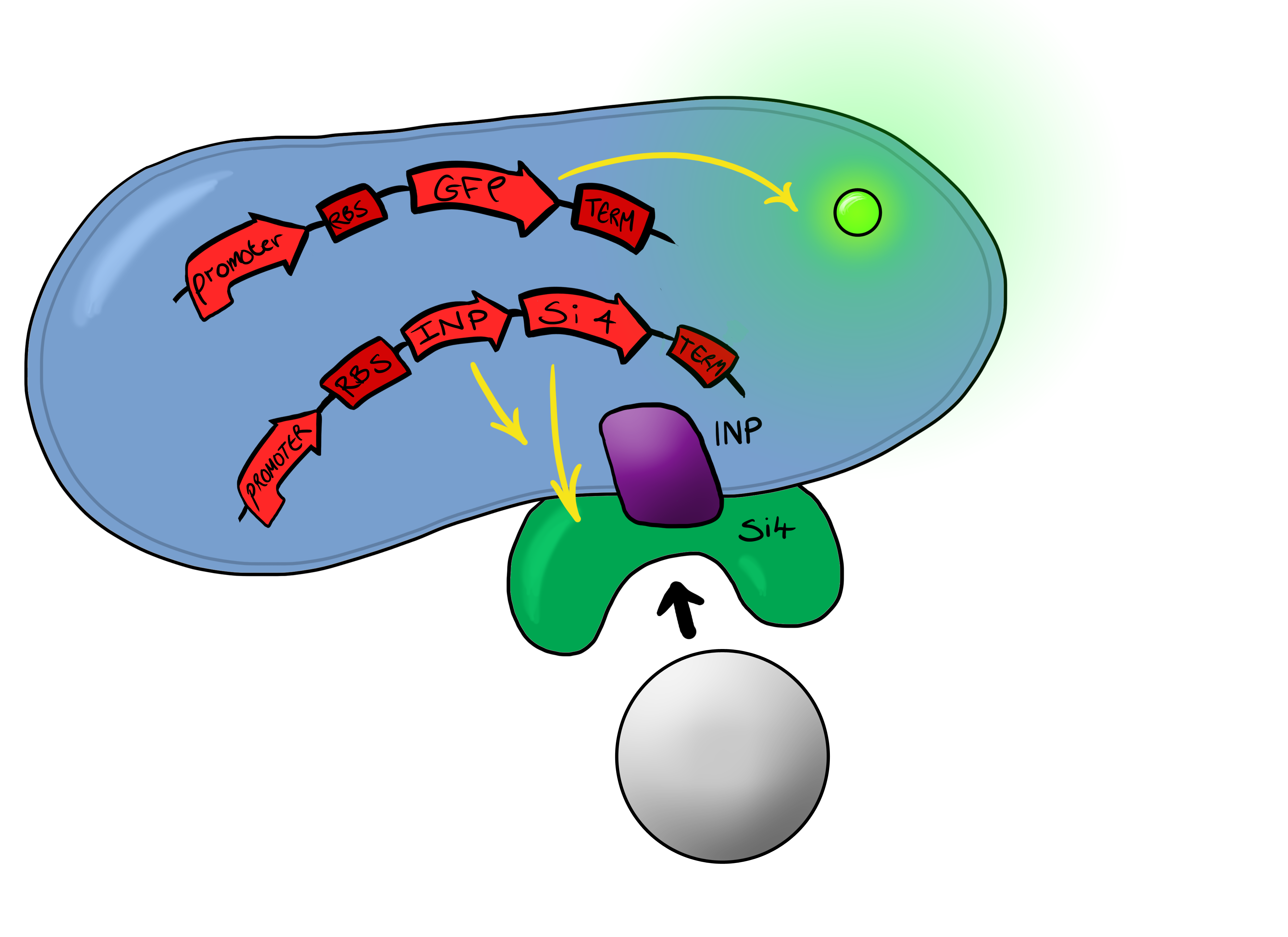|
Our Project
What is MicroBeagle I hear you cry?
Well, MicroBeagle is a E.coli cell that has been modified so that it can “hunt down” pathogens. By utilising the Cpx pathway and GFP we hope to create a new biosensor that gives results that can be seen with the naked eye.
Why is the MircoBeagle a useful device?
There could be many different possible uses for our device as the pathogen detection mechanism we are using is modular and can easily be tailored to individual needs. We see the MircoBeagle being used for testing blood samples, detection of heavy metals and, our main focus, detection of pathogens in water samples.
Detecting pathogens in water is a really important application as 3.4 million people a year die from water related diseases. The figures are shocking and we as a team want to create something that may, in the future, help to reduce those numbers.
Below is a summary of our Biosystem development strategy...
Phase I
We split our project into self-contained phases, to help better organise ourselves, but also lay out a road map for our own future work within and without iGEM. The first of these looks at developing, characterising and producing basic Biosystems.
Biosystem 1
Biosystem 1 is a very simple modification of the Cpx promoter in E. coli to produce a fluorescent reporter when the cell is under membrane stress. We will then characterise and test the insertion following the work by [http://www.ncbi.nlm.nih.gov/pubmed/11830644 Otto & Silhaevy 2001] in which glass beads were used to induce hydrophobic membrane stress. What we would hope is that when we add our cells to a vial containing similar hydrophobic beads we can detect fluorescence emissions confirming that our biobrick is working as we had hoped. Bio bricks we will be using:
BBa_K135000 pCpxR promoter responds to membrane stress
BBa_K081012 Green fluorescent protein generator. Contain ribosome binding site and terminator
Biosystem 2
 Simultaneously, we will be developing a BioBrick for physical attachment and detection of particles. This will work using Ice Nucleation Protein to display a oligo-peptide of our choice on the outer-membrane of our E. coli, initially this will be a peptide capable of binding silica beads allowing us to create a model system of pathogen detection. The cells producing this receptor complex will also be constitutively producing a fluorescent reporter of our choice to allow for its detection on silica beads following removal of supernatant and washing. Biobricks we will be using:
BBa_K081012 for the Green fluorescent protein generator which contain a ribosome binding site and terminator.
BBa_K523008 is the Ice nucleation protein any sequence added to the C-terminus of the INP will be transported to cell membrane and be displayed on the surface of the cell.
BBaa_B0015, which is a double terminator,
BBa_B0034 a strong ribosome binding site and finally
BBa_J23119 a Constitutive promoter
Again, fluorescent reporters are used for visual purposes in characterisation experiments, but this time the focus of Biosystem 2 is on the adhesion proteins being used.
Phase II
Phase II takes the products of Phase I to the next level, and begins to look at integration of the two BioBricks.
Biosystem 3
Biosystem 3 brings together BS1 and BS2 in one plasmid. The genes that code for the INP and the si4 binding domain are now located on the same plasmid as the CpxP promoter and the GFP generator. The effect of this is that when the silcon bead binds to the Si4 binding domain connected to the INP protein and causes surface stress the CpxP promoter will be induced. This will cause GFP to be produced and this will act as a visible signal that the 'pathogen' has been detected.
The Cpx Pathway
This project is highly dependent upon a naturally occuring pathway in E.Coli called the Cpx pathway. It is associated with the regulation of periplasmic membrane stress and the misfolding of surface proteins. We may need to fine tune MicroBeagle for different applications, so by understanding the way the pathway is regulated, we stand a better chance of controlling the exact response we want. This may be done in a number of ways, from utilisation of an off-switch regulator, CpxP, to additonal pathways used to create a bio-logic gate or even by optimisation of buffer solution.
A brief explanation of the Cpx Pathway
The Cpx pathway responds to various membrane stress; it is a two component signal transduction pathway. The first component is CpxA, an inner membrane protein which, when bound to CpxP (an inhibitor molecule), in inactive. When CpxP is unbound from CpxA, CpxA autophosphorylates itself. A kinase enzyme then phosphorylates the CpxR, the second component in the pathway, which then binds to the Cpx promoter and activates transcription.
There is still a lot of debate regarding this pathway and many different theories but it is thought that membrane stress causes the misfolding of proteins (pili being the main contributor) causes misfolded subunits to accumulate in the periplasm and titrate the CpxP inhibitor molecule off the CpxA and activate the pathway.
|